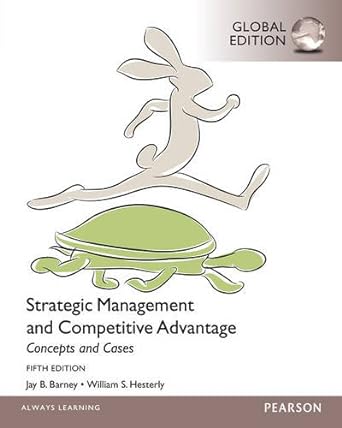Perform an analysis of the profit potential on the following two industries: The Pharmaceutical Industry The pharmaceutical
Question:
Perform an analysis of the profit potential on the following two industries:
The Pharmaceutical Industry The pharmaceutical industry consists of firms that develop, patent, and distribute drugs.
Although this industry does not have significant production economies, it does have important economies in research and development. Product differentiation exists as well because firms often sell branded products. Firms compete in research and development. However, once a product is developed and patented, competition is significantly reduced. Recently, the increased availability of generic, nonbranded drugs has threatened the profitability of some drug lines. Once an effective drug is developed, few, if any, alternatives to that drug usually are available. Drugs are manufactured from commodity chemicals that are available from numerous suppliers. Major customers include doctors and patients. Recently, increased costs have led the federal government and insurance companies to pressure drug companies to reduce their prices.
The Textile Industry The textile industry consists of firms that manufacture and distribute fabrics for use in clothing, furniture, carpeting, and so forth. Several firms have invested heavily in sophisticated manufacturing technology, and many lower-cost firms located in Asia have begun fabric production. Textiles are not branded products. Recently, tariffs on some imported textiles have been implemented. The industry has numerous firms; the largest have less than 10 percent market share. Traditional fabric materials (such as cotton and wool) have recently been threatened by the development of alternative chemical-based materials (such as nylon and rayon), although many textile companies have begun manufacturing with these new materials as well. Most raw materials are widely available, although some synthetic products periodically may be in short supply. There are numerous textile customers, but textile costs are usually a large percentage of their final product’s total costs. Many users shop around the world for the lowest textile prices.
Step by Step Answer:

Strategic Management And Competitive Advantage Concepts And Cases Global Edition Paperback
ISBN: 978-1292060088
5th Global Edition
Authors: William Hesterly





